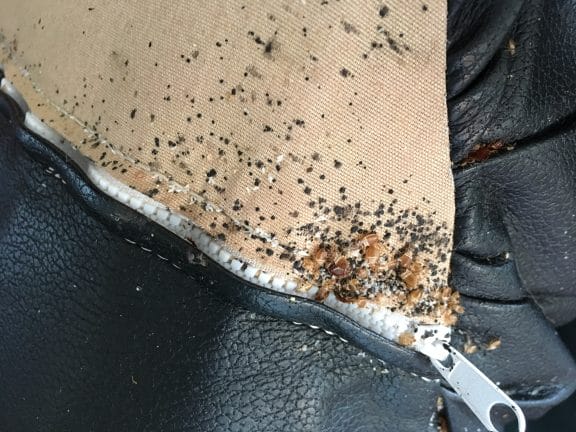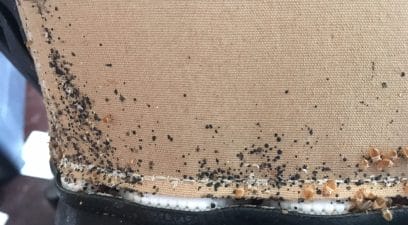Bed Bug Control
Pest-Tech Ltd deal with bed bugs and we know what to look for when identifying an infestation. We know they bring stress and its not very nice to have to deal with a bed bug infestation. However it is important that you know what to look for and the signs of bed bugs. This is so if you ever notice any signs you can react quickly. This blog has been written to give you the information you may need to identify this problem.

The Biology of the Bed Bug
Bed bugs use harborage, and normally you can see the different stages of the life cycle in significant numbers. Bedbugs spend most of their time in these harborages. Therefore targeted crack and crevice treatments are critical in their control.
Research has shown female bedbugs scatter from the established harborages to avoid multiple traumatic inseminations. Male bugs will also disperse to avoid mating competition with other males. This behavior should be considered when dealing with bedbugs.
Female bedbugs generally produce around 2 to 3 eggs per day. These are deposited all around the environment in which the bedbug lives. Each female could produce around 400 to 500 eggs during her lifetime. The time spent in each stage of the life cycle is greatly dependent upon food available.

Bed Bug Identification
Egg
Eggs are cream in colour with a slight bend and are approximately 1mm in length. Eggs tend to be laid in crevices within dark areas.
Nymph
Nymphs are small versions (approximately 2mm in length) of the adult form. They display the colour of partly digested blood.
Adult
Bedbugs are very distinctive and can usually be identified immediately. Adult bedbugs are red-brown, oval, wingless insects, which are approximately 5-7 mm in length and possess piercing mouthparts. When unfed, adults are pale yellow brown, but after a full blood meal, they take on a darker mahogany-brown colour.
The insect has three pairs of slender but well-developed walking legs, with efficient tarsal claws for clinging on to the host during feeding. The head is short and broad, with a pair of prominent compound eyes, in front of which is a pair of clearly visible 4-segmented antennae.

Signs of Bed Bugs
A clear, telltale sign of bed bugs is their excrement marks. The more bed bugs present, the more excrement. The more excrement, the easier to spot. Black dots eventually turn to large black patches in extreme circumstances.

So what if I only have one or two of them, what are the signs of a bed bug infestation?
- Look for blood spots on your sheets, pillowcases, dead bugs.
- Look around the skirting boards, walls, and slats of your bed for the excrement marks. If you only have one or two bed bugs, it will be less visible but still visible. Black that will rub off. Usually they will be tucked into the tightest corner, crack or join.
- Bed Bug bites will usually be in the form of a track, between 1 to 4, 5 or more bites in a row. Usually along the arms or areas of the body outside of the duvet. They will be red, itchy and can become infected with scratching. There are however no known diseases that can be caught from bed bug bites.

Signs of a bed bug infestation?
- Excrement black spots.
- Blood on sheets.
- Alive or Dead bed bugs.
- Check bed frame for excrement and bed bugs.
- Look at bedside Unit also for excrement and bed bugs.
- Inspect wardrobe, chest of drawers cracks and crevices.
- Items under the bed should be inspected for signs of bed bugs.
Bed bugs will crawl into the smallest and tightest areas to lay their eggs. This includes picture frames, ornaments, boxes, books and basically anything in and around your bed. A bed bug can also go for up to 9 months without feeding.

More information on bed bugs can be found on our web page or you can go to the Urban Pest Book. Alternatively you can call us to ask your questions.
